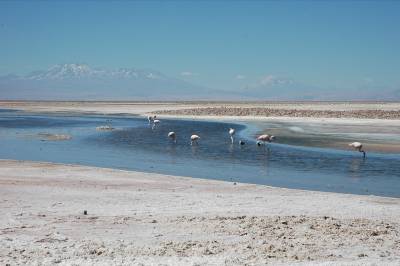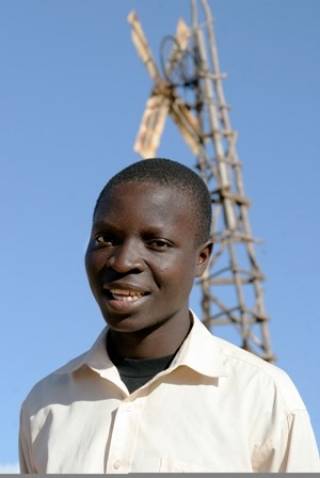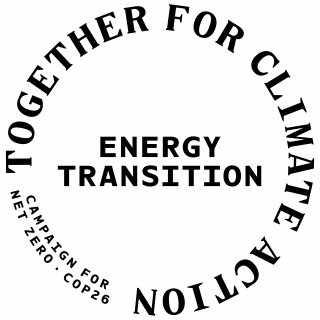The 'just transition'
17 May 2021

At a glance
- Climate change disproportionately affects vulnerable and low income communities – addressing climate change is a matter of justice
- But some actions intended to address climate change could cause other kinds of injustices
- Greenhouse gas emissions must be reduced through a ‘just transition’ to a low-carbon economy
- This requires building connections between local, national and international levels; ensuring transparency and accountability; and allowing all affected voices to be heard
What is the problem?
What is justice?
We live in an unequal world. 44% of the world’s economic wealth is owned by just 1% of the population, and the wealth of the richest does not ‘trickle down’ to the poorest. Because of wealth inequalities and various forms of discrimination, your ability to prosper is still affected by where you are born and to whom, by your gender, ethnicity and sexuality.
The intuitive sense that this situation is unjust draws on the idea of ‘justice as fairness’ – it seems unfair that simple accidents of birth should have such a decisive effect on your life chances. On what principles would a more just society be founded? The philosopher John Rawls used a thought experiment to explore this question. He imagined a group of people who are allowed to design the rules of their society, but under a strange state of limited knowledge – they are temporarily prevented from knowing their own individual identities, and hence how they personally might benefit or lose out from any inequality that persists within the society in which they eventually come to live. Rawls argued that in this situation, the members of the group would agree to organise their society in a way that enshrined basic liberties and opportunities, but also made the position of the society’s least advantaged member as good as it could possibly be – after all, any member of this group, when they came to live in the society they had designed, might discover that they themselves were that least advantaged member.
Thus, the principle of ‘justice as fairness’, as clarified by this thought experiment, is based on the empathic conviction that the plight of the least well-off is our common cause. It underpins initiatives such as the UN Sustainable Development Goals, which seek to reduce inequalities, and ensure that good health, education, decent work, and other basic preconditions of a prosperous life, are available to all.
What is the relationship between climate change and justice?
Climate change directly undermines justice: its impacts on natural systems and human societies will make it harder to achieve the Sustainable Development Goals. Further, many of the worst climate impacts, including droughts, floods and storms, have a high risk of occurrence in areas populated by people with very low incomes – the least advantaged in our global society – who also have less capacity to adapt and are therefore more vulnerable. Urgent action to reduce greenhouse gas emissions to net zero, and limit global warming to 1.5°C above pre-industrial levels, is therefore a matter of justice.
As well as avoiding future injustices caused by climate change, actions to cut greenhouse gas emissions could also help reduce other existing injustices. For example, getting rid of fossil fuels cuts greenhouse gas emissions, but it often also reduces the local air pollutants that are causes of respiratory illnesses. The burden of these illnesses typically falls on poorer communities living close to sources of pollution, such as busy and congested roads.
However, if not carefully managed, some actions taken with the aim of addressing climate change could have other unintended and negative consequences. To avoid such outcomes, the way we cut greenhouse gas emissions must be inclusive of the concerns of all the people that might be affected, so that our actions increase justice rather than exacerbate injustice. This has been called a ‘just transition’.
What are the key characteristics of the problem?
In what ways could our attempts to cut greenhouse gas emissions risk increasing injustice?
Millions of people worldwide are currently dependent on the work that carbon-intensive industries provide. As the world moves away from fossil fuels, such jobs will rapidly decline. This could have particularly devastating impacts on areas in which carbon-intensive industries are dominant employers. For those who lose their jobs and livelihoods, a low- carbon transition may not seem particularly just. Without careful attention, the people most affected by these changes may, for understandable reasons, resist them, creating political barriers to the transition.
Substituting carbon-intensive technologies with low-carbon technologies does not necessarily reset the wider historical context of injustices within which the technologies operate. Richer countries have greater capacity to invest in technology development and innovation. In many cases, this wealth is a legacy of decades or centuries of industrialisation, based on the consumption of fossil fuels. This wealth inequality creates a risk that richer countries will capture the profits associated with the rapid worldwide deployment of low-carbon technologies, while less wealthy countries continue to be dependent on imported technologies, without developing internal innovative capacities, and possibly increasing their levels of debt. Furthermore, for those low-income countries that have reserves of fossil fuels, the net-zero carbon transition could mean that the wealth they could have generated from their natural resources will no longer be available. This could be seen as unjust, given that other countries have historically accrued significant wealth from developing their fossil fuels.
Whilst the net-zero carbon transition implies a rapid reduction in demand for some resources – notably fossil fuels – it implies a rapid increase in demand for other kinds of resources, such as the minerals used to manufacture components for low-carbon technologies. For example, cobalt and lithium are components of electric batteries, the demand for which is expected to soar if we move from petrol and diesel to electric vehicles. But reserves of cobalt are concentrated in a few places worldwide, often in fragile or corrupt states, where mining activities have been subject to accusations of human rights abuses and child exploitation. Lithium is also concentrated in relatively few places, one of which is the Salar de Atacama, a salt flat in northern Chile. Here, concerns have been raised that the process of lithium extraction places stresses on water supplies, threatening the ecological integrity of the region, which is also a place of spiritual importance for indigenous communities.

The Salar de Atacama, a salt flat in northern Chile, contains rich lithium deposits, and is also a place of spiritual value for indigenous communities. Picture credit: Valerio Pillar
As will be explored in a future explainer in this series, land itself may become a highly valued commodity within the low-carbon transition, as millions of hectares could be in demand for growing energy crops or planting trees, which remove CO2 from the atmosphere and thus could contribute towards the ‘net zero’ target. Again, the acquisition of land for these purposes could be in conflict with the needs and values of populations who may have other associations with and uses for the land.
What is the solution?
Retraining and investment in communities
In cases where jobs are at risk, retraining, and investment in new skills – which are in any case crucial to decarbonising our economies – will contribute substantially to making the transition a just one, by helping to compensate for the loss of carbon-intensive jobs. In some cases, skills associated with fossil fuel industries may be partly transferrable to low-carbon industries. In other cases the skills may be quite different, but re-training workers may still be a viable option. This could allow a direct replacement of high-carbon jobs with low-carbon jobs within the same region, for example by choosing to site a new battery factory in an ex-coal mining town. In still other cases however, the shift from high to low-carbon industries may involve a geographical shift, such that workers in the declining industry cannot find alternative employment within their local area. Such cases may call for investment in affected areas to rebuild local economies in other ways – perhaps through supporting diversification into other forms of work, but in a way that preserves the social fabric of the community.
New forms of financing and knowledge sharing
Switching to low-carbon technologies does not in itself guarantee a reset of global inequalities. But it could offer opportunities to do things differently. Alternative approaches to providing finance, and to transferring technology and knowledge, could avoid the trap of technology dependence for currently low-income countries, and instead allow the flourishing of self-generating wealth. For example, instead of channelling finance through large-scale projects developed by multinational companies, micro-credit could be used to supply much smaller loans directly to entrepreneurs, who may generate more wealth at the local scale. We could also ask questions about intellectual property rights. Just as many are now calling for waiving of patents for Covid vaccines to create a ‘People’s vaccine’, is there a case for more low-carbon technological knowledge to be ‘open-sourced’, allowing other innovators to develop and build on it? A glimpse of the potential for innovation is found in the story of William Kamkwamba, the Malawian inventor who at the age of 14 used an engineering text book to construct a wind turbine from bicycle parts to provide electricity for his village. How much more latent potential for innovation could be unleashed if open-source knowledge transfer was scaled up and systematised? Low-carbon technologies have in many cases benefited substantially from some form of public support. The sharing of such communally-developed knowledge could be to the benefit of all.

At the age of 14, William Kamkwamba used an engineering text book to construct a wind turbine from bicycle parts. Picture credit: ALA
Transparency, accountability and inclusiveness
The risks of conflicts and injustices arising from the extraction of resources demanded by low-carbon technologies, must be addressed by increasing transparency and accountability in the global supply chains that support these technologies. As well as governments, the global companies that engage in these supply chains can and should be held to account for associated injustices, through consumer pressure as well as legal action. Whilst in some cases miscarriages of justice may be clear, in other cases the question of how to use – or not use – a resource or area of land, may be more complex. However, the outcome is likely to be more just if at least the interests of all parties are heard in a way that gives due consideration to their various positions and values, and which does not rely on coercion or the power of money to force through the solution that is most convenient to the most powerful parties.
What is stopping the solution being implemented?
A multi-level problem
However, achieving these outcomes is complicated by the fact that the issues involve the integration of concerns at multiple levels. National governments set national policies – often affected by short-term election cycles, and in some cases influenced by powerful companies. Large companies themselves clearly wish to survive and are likely to adopt approaches that involve minimal disruption to their current business models. Global climate negotiations are driven by negotiations between nation states, into which other kinds of actors struggle to have a direct input. On the other hand, miscarriages of justice occur to specific people or communities, at local levels. Thus, where unjust outcomes occur, it can sometimes be quite unclear where the affected parties may seek redress, or what power they have to bring about a different outcome.
How can these barriers be removed?
Building connections
Dealing with climate change requires action at multiple levels – local, regional, national and global. But dealing with climate change in a just way will increasingly require greatly improved processes of communication between all these levels, so that knowledge of problems experienced in local areas can be successfully and rapidly transmitted to national and global levels – to national governments, global companies and international negotiation processes – and appropriate amendments to policies and practices made. In this way large-scale, unintended consequences may be reduced and avoided, and more positive opportunities seized.
National governments will need to be aware of the challenges felt in particular locations and communities, and to take action to redress injustices, such as retraining, investment in skills or other forms of community-level investments. Local governments, as well as participatory forums such as Citizens’ Assemblies, could play important roles in identifying local challenges to justice associated with the net-zero transition, and transmitting these concerns so that they impact on national level policies.
At the international level too, the integration of the views of actors from multiple scales is important. There has been progress in this regard, as in recent years the annual Conference of Parties (COP) of the UN Climate Change Convention has increasingly integrated the contributions of ‘non-state actors’ – one example being the recently established Local Communities and Indigenous Peoples Platform. The multi-generational knowledge of traditional land users is crucial to understanding how to manage resources in a sustainable and just way, whilst addressing climate change.
These kinds of interactions are crucial because, as discussed in our Explainer on COP26, a number of facilitating mechanisms are now being discussed at the global scale which could have major implications for people at regional and local scales. COP26 will feature discussions on raising climate finance for developing countries, on international carbon markets, on large-scale technology deployment and on ‘nature-based solutions’, such as using tree-growing projects to take CO2 out of the atmosphere. In all such discussions it is vital that attention is paid to local knowledge, such as on the best way of directing the money raised through climate finance, on the social and economic implications of low-carbon supply chains, or on the most locally appropriate forms of nature-based solutions, so that the risks of unjust outcomes can be reduced.
Conclusion
Halting climate change is an essential part of reducing injustice and inequality in our world. However, the way in which we bring about the transition to a net-zero carbon world must itself be subject to principles of justice as fairness – a just transition. The danger is that existing power structures mean that the net-zero carbon transition simply replicates existing inequalities. Instead, the transition has the potential to reduce existing inequalities if the right choices are made. Amplifying voices from all parts of society, and ensuring that these are fairly represented in the national and international arenas in which globally significant decisions are made, is essential to achieving this.
Key references for further information
- Learn more about the UN Sustainable Development Goals here.
- Listen to William Kamkwamba’s story here.
- Find out more about the ‘Just Transition’ here.
 Close
Close


